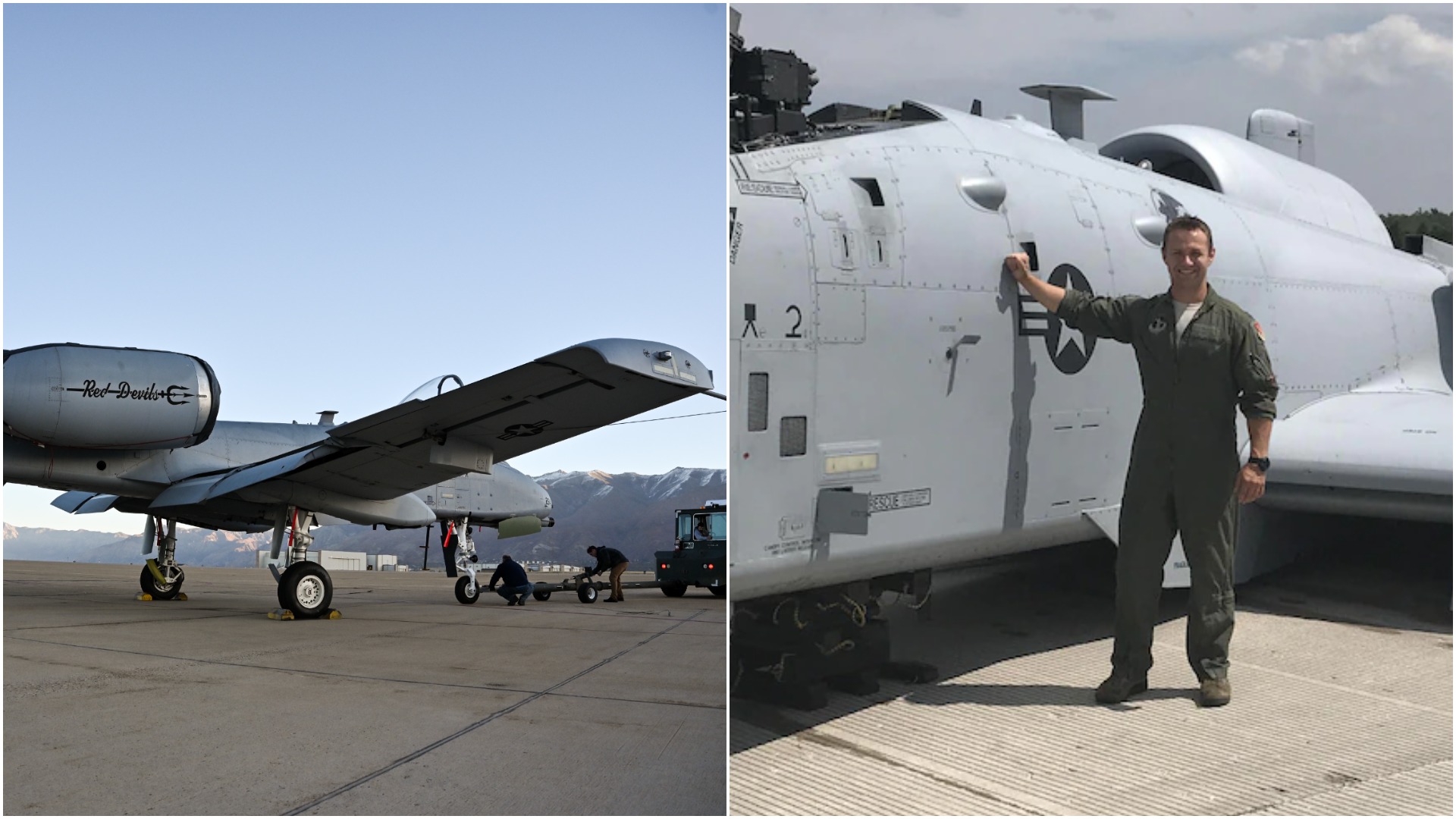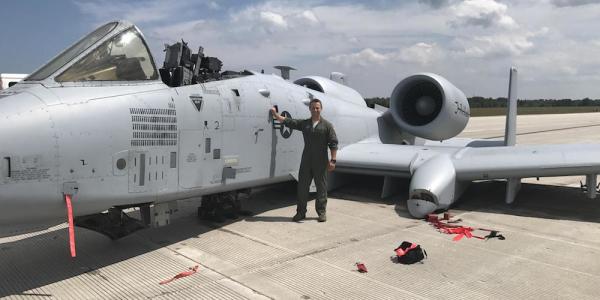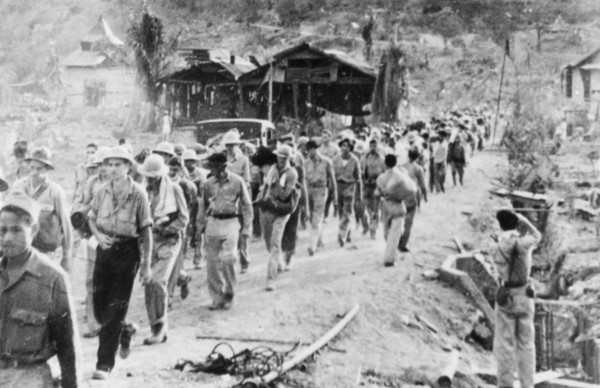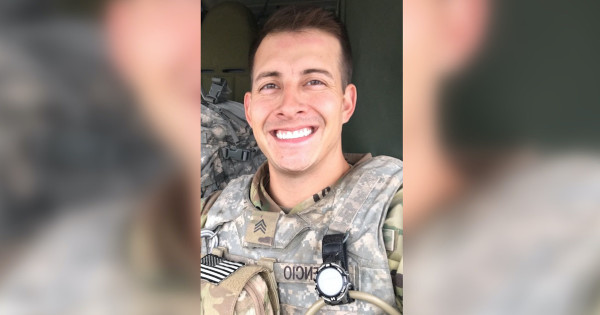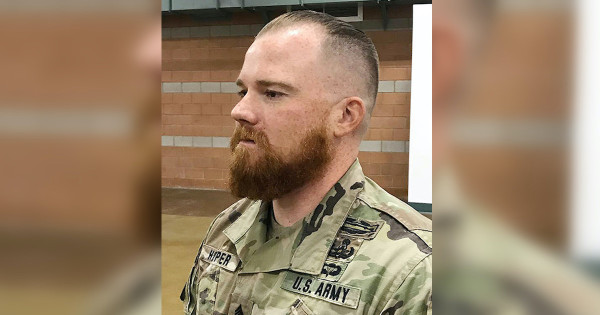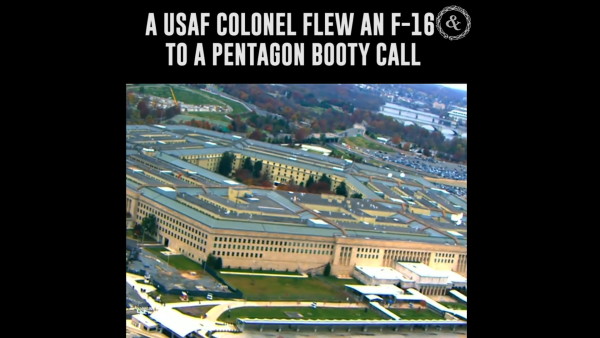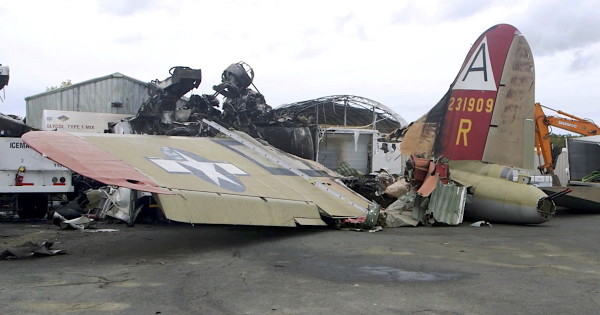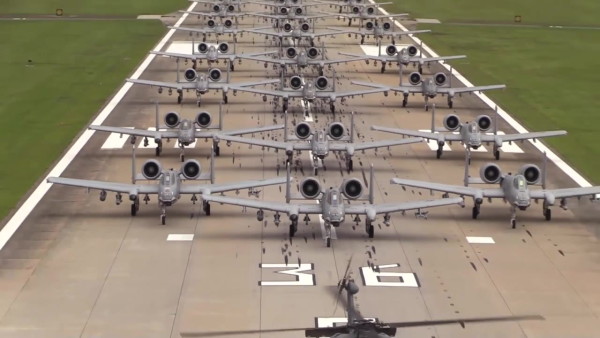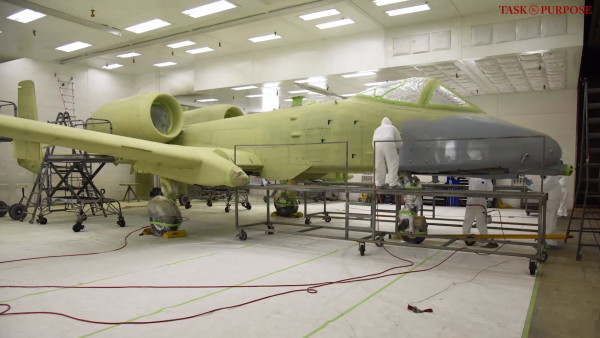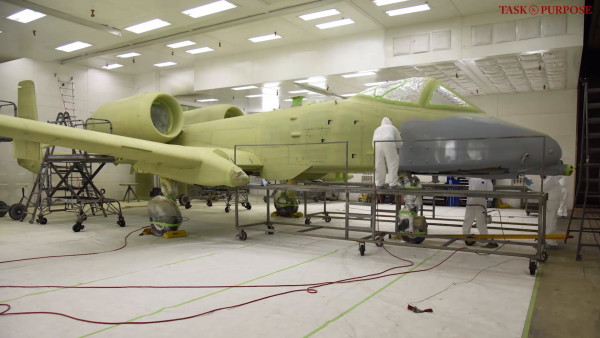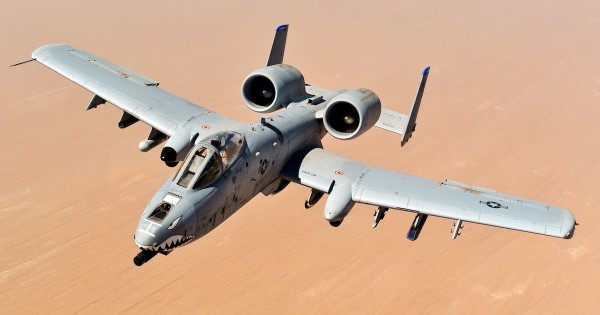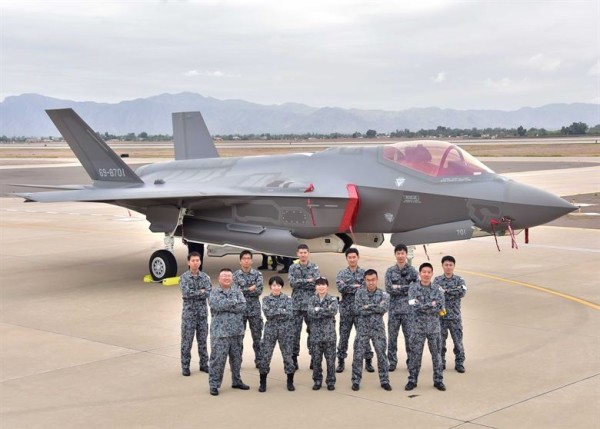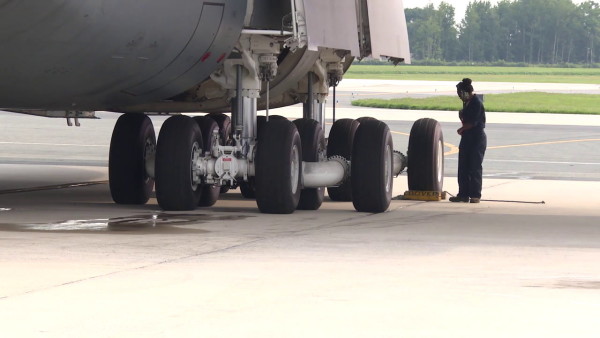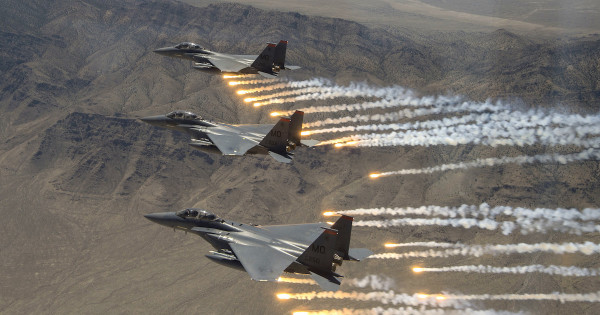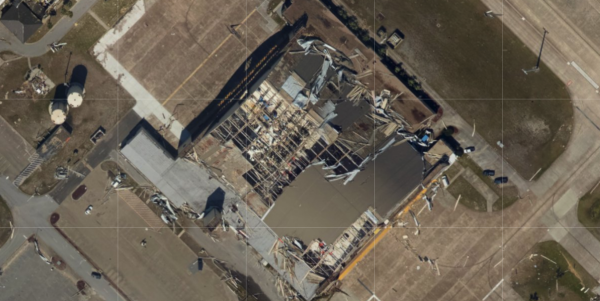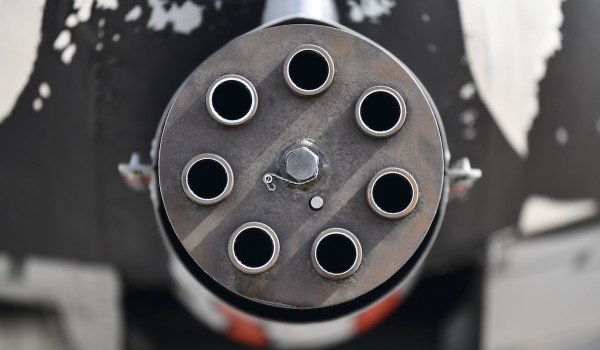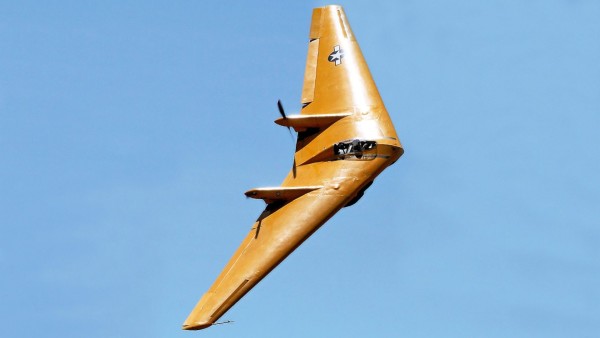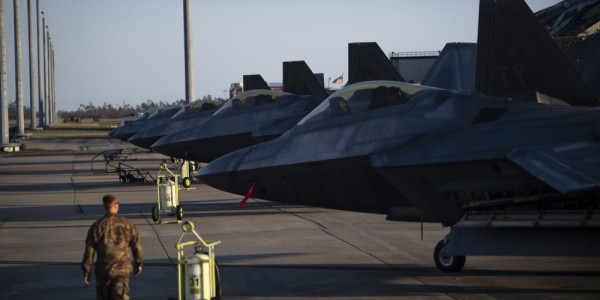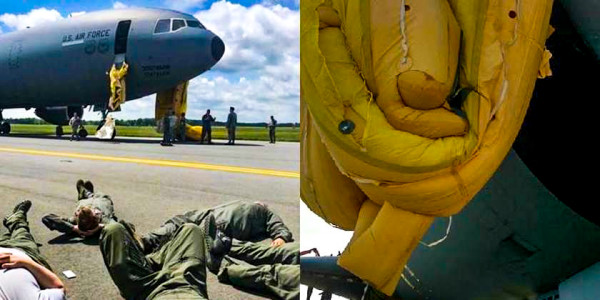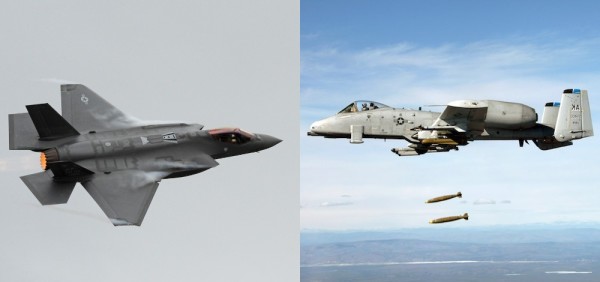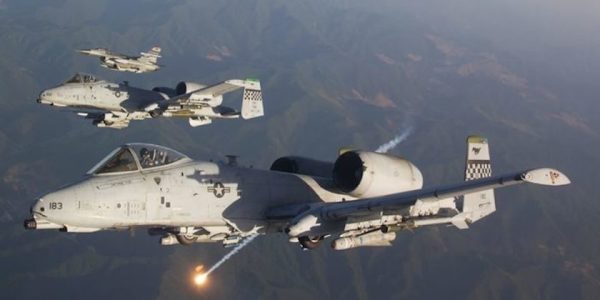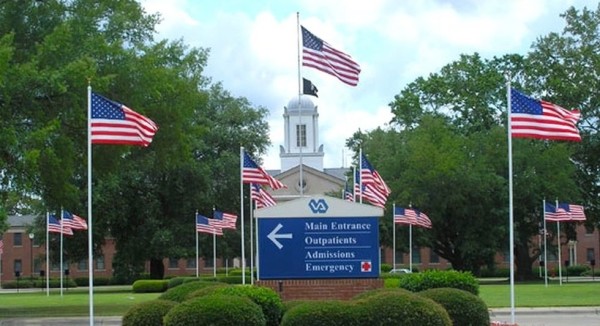It was July 20, 2017, and Capt. Brett DeVries was in trouble. The Michigan Air National Guard pilot was flying an A-10 Thunderbolt II attack plane on a training mission over Michigan’s Grayling Air Gunnery Range when the aircraft’s 30mm cannon malfunctioned, blowing off the A-10’s canopy and sending his maps and checklists flying.
“It was like someone sucker punched me,” said DeVries, who is now a major. “I was just dazed for a moment.”
With incredible flying skill, DeVries managed to get the A-10 under control and fly it to the Alpena Combat Readiness Training Center for an emergency landing. But there was another problem: the jet’s nose gear was stuck in the up position. That meant DeVries would have to pull another aviation rabbit out of the hat by performing a wheel’s-up belly landing, a risky procedure under any circumstances, but even more so without a canopy.
Whether it was his training, skill, or just plain good luck, DeVries managed to stick the landing and walk away unharmed. In fact, he flew so well that the bird he landed that day is coming back into service after three years of repair work.
“We knew we could do it, but it would take a long time,” said Daniel Wise, A-10 planning chief for the 571st Aircraft Maintenance Squadron, the unit at Hill Air Force Base, Utah, which helped bring back the injured bird.

“We basically rebuilt the entire front of the A-10 without aided engineering and unprocurable parts that had to be local manufactured,” Wise added in a recent Air Force release.
Though Wise and the larger 309th Air Maintenance Group were successful in getting tail number 80-0264 airworthy again, it was a hard road to get there, and the reason it took so long has roots in the Air Force’s years-long effort to kill the A-10, which is lovingly known by its fans as the ‘Warthog.’
Like Wise said, the front of the A-10 needed to be re-built, which required parts that have not been manufactured in decades. That’s not an accident. According to a report released in September by the Project On Government Oversight, a non-profit watchdog group, the Air Force has worked hard behind the scenes to starve the Warthog of replacement parts in order to convince Congress that the A-10 is old, difficult to maintain and not worth the upkeep, despite Congress’ wishes to keep the extremely effective aircraft in business.
For example, the service has allowed supplier contracts to lapse so that they can’t provide replacement parts; and reduced the Air Force maintenance depot’s capacity to conduct overhauls. But one of the most effective efforts to ground the plane is the Air Force’s move to delay the re-winging of the A-10, which has essentially grounded many jets that can’t fly because their current wings are too old.
“[W]ithout new wings, some of the aircraft face a kind of de facto retirement, grounded when inspections show signs of metal fatigue or when the current wings have too many flight hours,” wrote the Project On Government Oversight.
The Air Force pushed back on these claims, pointing out that it was spending quite a chunk of change to keep A-10s flying.
“The Air Force spends significant money and manpower to keep the nearly 45 year old aircraft operational,” Ann Stefanek, chief of media operations for the service, told Task & Purpose in September. “In fact, the Air Force has invested $880M in A-10 modernization with plans of flying the aircraft into the 2030s.”
However, one former A-10 driver who still works with the Warthog community in a training capacity said at the time that the POGO report was “spot-on.”
“If you had access to the budget submissions over the years, you would see a continual reduction over time,” retired Lt. Col. Gregg Montijo said in September. “It’s a death from a thousand cuts.”

Those thousand cuts come with real safety consequences. The parts on which A-10s are running low include missing central interface computer units, integrated flight and fire control computers, radios, hydraulic actuators to control flight surfaces, and replacement parts for the 30mm GAU-8/A cannon, according to the report.
The part of DeVries’ A-10 that malfunctioned in 2017 was the cannon. Including that incident, there have been four gear-up landings in the last four years which were “all caused by either gun maintenance issues or bad ammo,” Montijo said.
“Gun blows up while firing it, pilots go to lower the landing gear, the nose gear does not come down, and the procedure is to land it all gear up,” he added.
Though the A-10 was designed to land gear up, the landings caused between $750,000 and $2.5 million worth of damage, he said, and they put the pilots at a much greater risk of death or injury.
“I just thought, ‘There is no way this is happening right now,’” said DeVries’ wingman, Maj. Shannon Vickers, when he realized DeVries’ landing gear was stuck during that 2017 training mission. “It all was sort of surreal, but at the same time, we were 100 percent focused on the task ahead of us.”
It’s a credit to DeVries’ and Vickers’ skill as pilots that the situation did not end in injury, death or aircraft loss. Indeed, DeVries was awarded a Distinguished Flying Cross in 2020 for his outstanding airmanship. But the belly landing was just the start of the road for tail number 80-0264. The bird arrived to Hill in pieces, strapped to flatbed trucks, in July 2018, and the damage was extensive.
“There’s a main nose bean right next to the gun that blew up, so the inside of the entire gun cavity had to be rebuilt,” said Scott Oster, lead A-10 planner for the 571st Aircraft Maintenance Squadron. “It was just a whole lot of structural work, like 90 percent.”
The plane was more than 40 years old and, as stated earlier, many of the streams of replacement parts dried up a long time ago.
“A lot of the parts are unavailable so we have to run them through our local manufacturing process and make them ourselves,” Oster said. “With any of the other weapons systems, if they have a bad part, they order it through supply and replace it. On the A-10’s, we’re kind of in a different world.”

It takes about two weeks to locally make a part, heat-treat it, and get it on the airplane, Oster said, but it might take as long as two years to get an outside contractor to make one. However, parts shortages are not the only problem that the repair experts at Hill must contend with.
According to the POGO report, the Air Force has tried to shut down A-10 maintenance facilities at Hill Air Force Base. Though Congress stepped in to save the facilities, the combination of grounded aircraft; parts shortages; and the threat of depot closure has scared many experienced maintainers to find new jobs, the report read. Though the Air Force needs to send 57 A-10s through the Hill facility every year, right now it can handle only 31 a year, the report said.
“[U]ntil the A-10 program receives the parts it needs in the right quantities, it will be difficult to entice the maintenance crews back,” the report concluded.
Despite these challenges, the team at Hill got it done.
“Our planners, schedulers, engineers, parts makers and everyone on the floor who put this legacy airframe back together are totally appreciated for their skill and overall effort,” Wise said. “We’re all pretty passionate about keeping the A-10 alive and in the air. It’s America’s number-one choice for close-air support and getting 264 ready to fly back home is really something to be proud of.”
The A-10 is getting old, and the Air Force says the slow-moving aircraft is no longer relevant against the advanced air defenses of a near-peer rival like China. However, some experts argue that the A-10’s mission of close air support is more important than ever, given America’s rising tensions with China and Russia.
“While nations seek to deter head-to-head action, they actively compete on the fringes via proxies,” Air Force expert Mike Benitez wrote in his newsletter The Merge on Sunday. “These can be physical, geographic, economic, social, etc. Notable geographic proxies you might have heard of are the Vietnam War, the Iran-Iraq War, and the Russia-Afghan War.”
Close air support does not necessarily need to take the form of an A-10. In fact, Benitez wrote his comments in the context of the AT-6 and A-29 turboprop light attack aircraft, both of which the Air Force has considered in the past as close air support platforms. The service itself hopes to use the F-35 Lightning II for close air support missions going forward, though it’s not clear the F-35 can fill the A-10’s role on the battlefield.

In 2018, the Air Force held a close-air support fly-off between the two aircraft, but large-scale Army and Marine units (the type of units most closely involved with close air support) did not participate and the competition was rigged in favor of the F-35, Air Force Times reported.
According to testing conducted in 2018 and 2019, the stealth and advanced sensors of the F-35 helped it perform in close air support missions against adversaries with higher-tech weapons, Air Force Magazine reported. While A-10 pilots had more experience actually flying CAS missions, the F-35 program apparently poached a few of them, the Air Force said.
Still, one former A-10 pilot said the F-35 has nothing on the ‘Hog when it comes to close air support.
“Anyone who’s been around ground combat knows F-35s, F-22s and legacy fast jets are far too fast and lack the close in maneuverability to be able detect camouflaged threats to our troops or to separate friend from foe in a highly fluid firefight,” wrote retired Lt. Col. Brian Boeding in a 2020 column for Breaking Defense.
Boeding also argued that the frontline targets which a close air support aircraft would attack are not as heavily defended against air threats as a strategic target farther back from the fighting would be. That means the F-35’s stealth and sensor capabilities are largely irrelevant.
“To defeat us with surprise and shock, enemy maneuver forces simply cannot afford to drag around tons and tons of large, heavy and slow-to-emplace radar missiles and radar vans,” he wrote, saying that front-line defenses usually involve “mobile antiaircraft guns and missiles, mostly infrared and shoulder fired.”
F-35s are also simply not built as tough as the A-10 is, Boeding argued, and that matters in the knife-fight of the close air support world, where A-10s have had to fly home with hundreds of holes in it, or, in DeVries’ case, the canopy missing. Meanwhile, the services “collectively face tens of billions of dollars in sustainment costs that they project will be unaffordable,” for the F-35, wrote the Government Accountability Office in July. And that’s just in peacetime, without the damage of combat factored in.

At the end of the day, one could argue that the A-10, an aircraft devoted solely to close air support, is an anomaly in the history of the Air Force.
“Between 1950 and 1990, the Air Force produced 15,600 fighter aircraft. Only 707 were designed for close air support,” wrote retired Air Force Col. James Burton in his 1993 book “The Pentagon Wars. “This is the true measure of priority.”
But during the Gulf War, even some of the skeptics were singing the A-10’s praises. After all, the aircraft is credited with killing 1,000 Iraqi tanks and 1,200 artillery, nearly a quarter of the Iraqi arsenal, Burton wrote.
“I take back all the bad things I’ve ever said about the A-10s,” Lt. Gen Charles Horner, commander of allied air forces during the Gulf War, said during a 1991 staff meeting, Burton wrote.
“I love them,” Horner said. “They’re saving our asses!”
No matter what America’s close air support of the future might look like, there’ll be at least one more Warthog keeping an eye on things for the time being. Welcome back 80-0264, it’s “brrt” to see you.
More great stories on Task & Purpose
- It’s official: Marine Corps brings back the sleeve tattoo
- Air Force says colonel who berated subordinates in leaked audio created ‘unhealthy’ climate
- The difference between Air Force and Navy pilots in one short video
- We finally know why the Army fired its three-star general in charge of housing
- This is the Army’s plan to stop physically breaking so many of its soldiers
- The Army is reviewing its height and weight standards for the first time in decades
- Air Force uniform that covered sleeping Afghan child in evacuation photo headed to a museum
Want to write for Task & Purpose? Learn more here and be sure to check out more great stories on our homepage.

